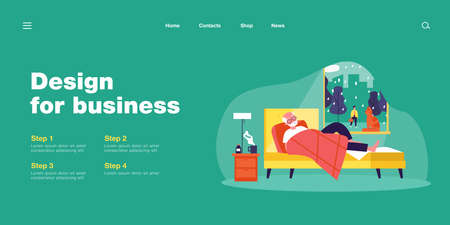1. Understanding User-Generated Content (UGC) and Its Role in Modern Branding
What is User-Generated Content (UGC)?
User-Generated Content, or UGC, refers to any type of content—such as photos, videos, reviews, testimonials, or social media posts—created by real people rather than brands. In the U.S., UGC often comes from loyal fans, everyday consumers, and influencers who genuinely love a brand’s product or service. Unlike traditional marketing content made by companies, UGC is created voluntarily and shared on platforms like Instagram, TikTok, YouTube, and Facebook.
Why UGC is a Game-Changer for Startups
Startups in the U.S. face tough competition and tight budgets. UGC offers a powerful way to stand out without spending big bucks on advertising. Here’s why it matters:
| Benefit | Description | Example in the U.S. |
|---|---|---|
| Authenticity | Real customers share honest opinions and experiences. | An American coffee shop reposting a customer’s Instagram story about their morning latte. |
| Trust-Building | People trust peer reviews more than branded ads. | A startup skincare brand featuring unfiltered before-and-after photos from real users. |
| Cost-Effectiveness | No need for expensive ad shoots—fans create content for free. | A small fitness apparel company sharing fan workout videos instead of hiring models. |
| Community Engagement | Fans feel valued when brands highlight their content. | A tech gadget startup running a hashtag challenge on TikTok and showcasing entries on its website. |
The Role of UGC in Shaping the U.S. Digital Landscape
In America’s digital-first culture, UGC helps startups connect with audiences where they spend time—on social media and online communities. Because American consumers value transparency and relatability, brands that showcase real stories stand out and build loyal followings faster. With Gen Z and Millennials leading the way online, UGC lets startups tap into trends and conversations that matter most right now.
2. Crafting a Content Strategy That Resonates with American Audiences
Understanding What Matters to U.S. Consumers
When building a user-generated content (UGC) strategy for the U.S. market, its important to first know what American audiences care about. Trends, humor, and values can shift quickly in the States, so startups should pay attention to whats popular on platforms like TikTok, Instagram, and X (formerly Twitter). Look at memes, viral challenges, and current events that people are talking about. Americans appreciate authenticity—so campaigns should feel real and relatable rather than overly polished or corporate.
Best Practices for Authentic UGC Campaigns
| Best Practice | Why It Works in the U.S. | Example |
|---|---|---|
| Highlight Real Stories | Americans love hearing genuine experiences from real people—they trust peers more than ads. | Share customer testimonials or feature fans using your product in everyday life. |
| Embrace Humor | Humor connects people and makes brands memorable. Lighthearted content is often shared widely. | Create meme contests or ask fans to caption funny photos involving your brand. |
| Tap Into Trends | Trending topics and challenges help your brand join larger cultural conversations. | Encourage users to join a hashtag challenge related to your industry or mission. |
| Show Diversity and Inclusion | The U.S. is culturally diverse; reflecting this builds trust and shows respect for all communities. | Feature fans from different backgrounds in your campaigns and celebrate various holidays or awareness months. |
| Reward Participation | Americans respond well to incentives and recognition—it motivates them to join in. | Offer shoutouts, small prizes, or exclusive access for top content creators. |
Cultural Touchstones: Humor, Values, and Trends
A campaign that works in one country might not land the same way in the U.S. Here are some tips for staying on track:
- Stay Light-Hearted: Jokes should be playful and non-offensive. Pop culture references—from sports teams to movie quotes—can make content more relatable.
- Reflect American Values: Themes like freedom, community support, innovation, or giving back are meaningful to many Americans. Aligning your brand with these ideas can build deeper connections.
- Keep Up With Trends: Use tools like Google Trends or explore trending hashtags on social media to see what’s hot right now. Adapt your campaign fast if you spot a trend rising.
User-Generated Content Campaign Ideas Tailored for the U.S.
- #MyFirst[YourBrand] Challenge: Ask fans to share stories about their first experience with your product—nostalgia plays well with American audiences.
- Meme Remix Contests: Let users create memes using your brand assets or slogans—reward the funniest ones with a feature on your main page.
- Proudly Local Spotlights: Invite customers to show how they use your product in their hometowns, celebrating local pride and diversity across states.

3. Engaging Fans: Tools and Platforms to Encourage UGC
Motivating Fans to Create and Share Content
User-generated content (UGC) is a powerful way for startups in the U.S. to build trust, grow their brand, and connect with real people. The key is making it easy and exciting for your fans to share their own stories, photos, or videos about your brand. Here are some proven ways to get your audience involved:
Effective Ways to Encourage UGC
| Method | Description | U.S.-Specific Example |
|---|---|---|
| Incentive Programs | Offer discounts, giveaways, or exclusive perks in exchange for user content. | “Share your experience for a chance to win a $50 Amazon gift card.” |
| Branded Hashtags | Create unique hashtags so fans can tag their posts and join a larger community. | #MyStartupStory or #MadeInUSA moments |
| Social Media Challenges | Launch fun challenges that encourage creativity around your product or service. | TikTok dance challenge using your product; Instagram photo contest featuring your brand colors |
| Spotlighting Fans | Feature fan-created content on your official channels to show appreciation and inspire others. | “Fan of the Week” on Instagram Stories or Twitter shoutouts |
Leveraging Popular U.S. Social Platforms
Choosing the right platform is important because different audiences hang out in different places online. Here are some of the top social platforms in the U.S. for driving UGC:
| Platform | Main Audience | Why It Works for UGC |
|---|---|---|
| Younger adults, creatives, lifestyle fans | Visual-first; easy sharing through Stories and Reels; strong hashtag culture | |
| TikTok | Teens and young adults; trend-driven users | Short-form video makes it fun to join trends and challenges; huge viral potential |
| Twitter (now X) | Diverse age range; fast-paced conversations | Great for quick shoutouts, trending hashtags, and live engagement during events |
| Facebook Groups & Pages | All ages; community-focused users | Easier to build niche groups where fans share tips, reviews, and experiences with each other |
| YouTube Shorts/Channels | Wide audience; video enthusiasts and creators | Iideal for unboxings, reviews, tutorials—great long-term brand exposure from fan content |
Quick Tips to Boost Participation
- Make participation simple—clear instructions mean more entries!
- Acknowledge every submission—even a like or comment goes a long way.
- Create templates or prompts (like “Show us how you use our product!”) to spark ideas.
- Collaborate with micro-influencers who already love your brand—they can rally their followers too.
- Make participation simple—clear instructions mean more entries!
- Acknowledge every submission—even a like or comment goes a long way.
- Create templates or prompts (like “Show us how you use our product!”) to spark ideas.
- Collaborate with micro-influencers who already love your brand—they can rally their followers too.
By combining incentives, branded hashtags, creative challenges, and choosing the right social platforms popular in the U.S., startups can turn everyday customers into loyal advocates who help grow their brand organically.
Showcasing and Leveraging UGC for Maximum Brand Impact
Feature Fan Content Across Multiple Marketing Channels
User-Generated Content (UGC) shines when it gets seen in the right places. Startups can maximize brand impact by featuring fan-created photos, videos, reviews, or stories across different marketing channels. Here’s how:
| Channel | How to Feature UGC |
|---|---|
| Website Gallery | Create a dedicated gallery page or section on your homepage to highlight real customers using your product. Add captions with usernames and short testimonials. |
| Email Newsletters | Include top fan posts or customer stories in your regular emails. This not only validates your brand but also encourages other fans to share their experiences for a chance to be featured. |
| Social Media | Share UGC on your main feeds and Stories on Instagram, Facebook, TikTok, and X (Twitter). Use branded hashtags and tag the original creators to give them a shout-out. |
| Product Pages | Add customer photos or reviews directly onto product pages. Show new shoppers real-life examples to boost trust and conversions. |
| In-Store Displays (if applicable) | If you have physical locations, display printed fan posts, photos, or review quotes near relevant products. |
Best Practices for Giving Credit and Staying Legal
Always respect your fans’ rights when sharing their content. Here are simple steps to follow:
1. Ask Permission First
Before reposting any UGC, especially on your website or paid ads, get clear permission from the creator. A direct message or comment reply works well—just keep proof of consent.
2. Give Proper Credit
Tag the creator’s social handle in every post or mention their name if you’re featuring their content elsewhere. For example: “Photo by @janesmith.” This makes fans feel valued and builds trust.
3. Understand Copyrights and Terms of Use
If you plan to use UGC in advertising or for commercial purposes beyond organic social sharing, consider asking users to sign a simple release form or agree to terms stating how their content may be used.
Quick Checklist for UGC Sharing:
- Get permission before reposting.
- Always tag or credit the creator.
- Keep records of user consent.
- If using in ads, secure written approval.
- Never alter content in a misleading way.
Encourage Future Submissions with Recognition Programs
Create branded hashtags or monthly contests where the best fan submissions are featured on your main channels. Highlighting winners regularly motivates more users to participate and strengthens your community vibe.
Summary Table: Dos and Donts of Showcasing UGC
| Dos | Donts |
|---|---|
| Ask for permission every time Give visible credit Use UGC authentically Create dedicated UGC sections Celebrate fan contributions publicly |
Edit content deceptively Use without consent Forget to tag creators Ignore copyright laws Overwhelm feeds with low-quality UGC |
User-Generated Content can transform a startup’s marketing reach when showcased smartly and ethically. By highlighting genuine fan experiences across all platforms, while respecting creators’ rights, brands can build loyalty and authenticity that truly resonates with American audiences.
5. Measuring Success: Analyzing the ROI of UGC Campaigns
Understanding What to Track
For American startups, measuring the success of a User-Generated Content (UGC) campaign isn’t just about counting likes or shares. To really grow your brand, you need to focus on metrics that show engagement, influence, and business impact. Below are key metrics used by successful U.S.-based startups:
| Metric | What It Measures | Why It Matters | U.S. Benchmark Example |
|---|---|---|---|
| Engagement Rate | Likes, comments, shares per post | Shows how actively users interact with your brand | Top U.S. brands see 2–6% on Instagram |
| Reach & Impressions | Total unique users and total views | Tells you how far your message travels | DTC brands often aim for 100K+ monthly reach early on |
| User-Generated Posts | Number of posts created by fans about your brand | Measures advocacy and organic buzz | Glossier gets thousands of tagged posts per month |
| Conversion Rate | People who buy after seeing UGC vs. overall visitors | Directly links UGC to sales growth | BarkBox reported up to 20% higher conversion from UGC viewers |
| Customer Acquisition Cost (CAC) | Total spend divided by new customers gained via UGC campaigns | Tells if UGC is cost-effective compared to paid ads | An efficient CAC is $50–$200 for many U.S. DTC startups |
| Loyalty & Repeat Purchase Rate | % of customers returning after engaging with UGC content | Shows long-term value of engaged community members | Pura Vida Bracelets attributes over 30% repeat rate to social engagement/UGC efforts |
The Best Tools for Tracking UGC Performance in the U.S.
- Sprout Social: Widely used among American startups for tracking hashtags, engagement, and influencer impact.
- Google Analytics: Connects traffic and conversions directly from social or web-based UGC to purchases or signups.
- Loomly or Hootsuite: Good for scheduling and monitoring multi-channel UGC campaigns.
- Bazaarvoice and Yotpo: Help e-commerce startups collect and display authentic customer reviews and photos, then analyze their effect on sales.
- Nano Influencer Tools: Like Upfluence or AspireIQ, these help track micro-influencer performance—crucial for grassroots American brands.
Case Study: Glossier’s Community-First Approach
Glossier, a New York-based beauty startup, attributes much of its explosive growth to harnessing user-generated content. They tracked hashtag use (#glossier), measured referral traffic from Instagram Stories, and saw a direct link between customer posts and sales spikes during product launches. Using Sprout Social, they monitored engagement rates consistently above industry averages (4–5%) and found their CAC through UGC was 40% lower than traditional digital ads.
Making Data-Driven Decisions with Your UGC Campaigns
The most successful American startups treat measurement as an ongoing process. They run regular reports on the above metrics, experiment with new incentives for fan participation, and adjust campaigns based on what resonates best with their audience. By focusing on real engagement—not just vanity metrics—startups can maximize the ROI of their user-generated content programs in the competitive U.S. market.


